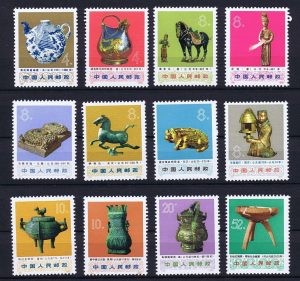
The Key Roles in a High-Performing Marketing Team
Title: Key Roles in a High-Performing Marketing Team As the world of marketing becomes more complex, companies are realizing the importance of having a high-performing
Bridging the Gap: The Evolution of Graphic Design
Graphic design is a creative field that has undergone a remarkable transformation over the years. From cave paintings to digital designs, it has come a long way, reflecting not only the changing times but also the evolving needs and preferences of art lovers. Today, graphic design is not just about creating visually appealing images; it is about telling a story, conveying an emotion, and engaging the viewer. In this article, we will delve deep into the history of graphic design, analyzing the various stages of its evolution and exploring the techniques, styles, and trends that have shaped its evolution.
The prehistoric Era
The earliest form of graphic design can be traced back to the prehistoric era, when humans used cave paintings and rock art to express their thoughts and emotions. The use of images and symbols to convey meaning was a common practice during that time. These artworks were not only aesthetically pleasing, but they also served as a medium of communication, conveying important information related to hunting, rituals, and daily life activities.
The Medieval period
The medieval period witnessed the emergence of illuminated manuscripts and the creation of hand-written books, which were embellished with intricate designs and colorful images. These manuscripts were created by skilled calligraphers and bookbinders who used various techniques such as gilding, ornamentation, and decorative embellishments to enhance the visual appeal of their creations.
The Renaissance Period
The Renaissance era saw a significant advancement in the field of graphic design. The printing press was invented, and printed books and newspapers became popular. It was during this time that typography was born, and serif and sans-serif fonts were created. The typography style of the Renaissance period became a benchmark for future generations, inspiring many artists to experiment with letters, spacing, and alignment.
The Industrial Revolution
The Industrial revolution, which began in the 18th century, brought about radical changes in the field of graphic design. The invention of lithography and photography enabled designers to create realistic images with greater accuracy. The use of new printing technologies made it possible to mass-produce various printed materials, including posters, magazines, and advertisements.
The Modern Era
The modern era of graphic design began in the early 20th century, and it was characterized by the emergence of avant-garde styles such as Art Nouveau, Art Deco, and Bauhaus. The use of color, shapes, and typography became more experimental, as designers began to explore new ways of creating visual impact. This era witnessed the birth of many iconic designs, such as Paul Rand’s IBM logo and Saul Bass’ iconic movie posters.
The Digital Age
The advent of the digital age in the 21st century has revolutionized the field of graphic design. The use of computers and software such as Adobe Photoshop, Illustrator, and InDesign has enabled designers to create designs that are more precise, efficient, and visually stunning. Today, graphic design is a blend of traditional and digital mediums, with designers using a combination of skills, techniques, and tools to create designs that are both practical and aesthetically pleasing.
Conclusion
The history of graphic design is a fascinating journey that reflects the changing times and evolving preferences of art lovers. From cave paintings to digital designs, graphic design has come a long way, and it will continue to evolve as technology advances and new trends emerge. As we approach the future, it’s clear that the field of graphic design will continue to play a vital role in shaping our world.
FAQs
Q. What are the basic principles of graphic design?
A. The basic principles of graphic design include alignment, balance, contrast, proximity, repetition, and whitespace.
Q. What are some common tools used in graphic design?
A. Some common tools used in graphic design include Adobe Photoshop, Illustrator, InDesign, Sketch, and Figma.
Q. How has technology changed the field of graphic design?
A. Technology has revolutionized the field of graphic design, making it more precise, efficient, and visually stunning. The use of computers and software such as Adobe Photoshop, Illustrator, and InDesign has enabled designers to create designs that were impossible to produce a few decades ago.
Q. What are some popular styles of graphic design?
A. Some popular styles of graphic design include minimalism, vintage, retro, grunge, and modern.
Q. Why is graphic design important?
A. Graphic design is important because it helps to create a visual identity for businesses, organizations, and individuals. It communicates messages, emotions, and ideas in an efficient and engaging way, making it an essential tool for marketing, advertising, and branding.

Title: Key Roles in a High-Performing Marketing Team As the world of marketing becomes more complex, companies are realizing the importance of having a high-performing

Email marketing is a crucial aspect of any business’s digital marketing campaign. But with so many options and strategies out there, it can be challenging

5 Must-Track Marketing Success Metrics for Business Growth As a business owner, keeping track of the performance of your marketing efforts is crucial to ensure

Talk with us!
Do you have a project in mind? Send us a message to understand how we can help you. We will get in touch with you.